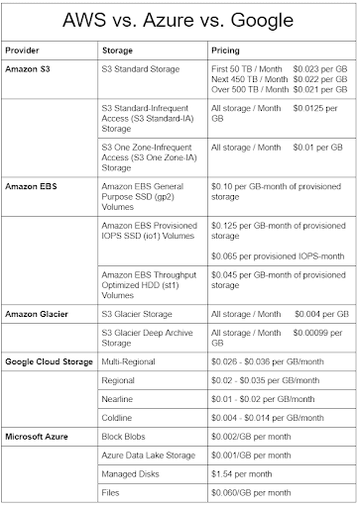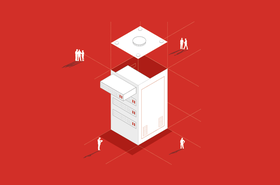I often get questions about comparing cloud storage costs from the three major cloud service providers (AWS, Azure and Google Cloud). When it comes to finding a solution for your cloud computing needs, solutions are best considered on a case-by-case basis. And given the breadth of cloud storage options available, it is certainly true in this case. A few things I will briefly consider are pricing models, discounts and steps you can take to avoid wasted cloud spend.
The leading cloud service providers have certain strengths and weaknesses that ultimately differentiate each one of them in terms of your particular development infrastructure, operations and applications. Cloud service providers offer many different cloud pricing points depending on compute, storage, database, analytics, application and deployment requirements. Additionally, organizations consider available services and networks provided to see the full scope of their resource capabilities and governance.
Prices can be subject to the type of hosting option you choose. One example is Relational Database Services (RDS). RDS pricing changes according to which database management system you use, and there are many more services like this to choose from.
AWS and Google stand out
Although not always the case, AWS is presumed to be the least expensive option available and remains the leader in the cloud computing market. But, Microsoft Azure and Google (GCP) are not far behind, and in recent years they have commanded innovation and market pricing reductions, thus closing gaps to bring them closer to AWS. That being said, being the first in the market gives AWS a great advantage over the competition as it commands a large scale of businesses and can offer lower prices than the competition.
It is well known for attracting more businesses, and in turn, invests its money back into the cloud by adding more servers to its data centers. Google is closing the gap on AWS: it was the first to cut prices in their pricing model to match AWS’.
Storage services overview
Let’s look at some of the more popular storage options offered by each of the major three providers.
AWS:
- Amazon S3 - Amazon Simple Storage Service (S3) is the most durable, highly performant and secure cloud storage service. It manages accounts at every level, scales on-demand and offers insights with built-in analytics.
- Amazon EBS - Amazon Elastic Block Store (EBS) provides block level storage volumes for use with EC2 instances. EBS delivers low-latency and consistent performance scaled to the needs of your application.
- Amazon Glacier - Amazon Glacier provides data archiving and long-term back up at a low-cost. It allows you to query data in place and retrieve only the subset of data you need from within an archive.
More about AWS options: Here
Azure:
- Archive Storage - Azure Archive Storage offers a low-cost, durable, and highly available secure cloud storage for rarely accessed data with flexible latency requirements.
- Blob Storage - Azure Blob Storage is a massively scalable object storage for unstructured data.
- Azure Files - Azure Files is a simple, secure and fully managed cloud file sharing storage.
Full Azure options: Here
Google Cloud:
- Google Cloud Storage - Google Cloud Storage offers a single API for all storage classes, simplifying development integration and reducing code complexity. Its highly scalable and performant with unlimited object storage.
- Cloud Filestore - Google Filestore is a high-performance file storage for applications that require a filesystem interface and a shared filesystem for data.
- Persistent Disk - Google Persistent Disk is a reliable high-performance block storage for virtual machine instances.
Explore more Google storage options: Here
Sample Pricing Comparison
The following chart offers a good overview of the main cloud pricing options for AWS, Azure and GCP:
Eliminate cloud overspend
Comparing cloud storage costs and getting the right solution for your storage use case is important, but don’t forget once you deploy you need to ensure you optimize your solution and cost. It’s important that your organization fully understands how much can be wasted on cloud spend.
Over-provisioned, underutilized and idle cloud resources run your cloud bill up and create waste. Always ensure that you are optimizing costs and governing usage by eliminating wasted cloud spend.





